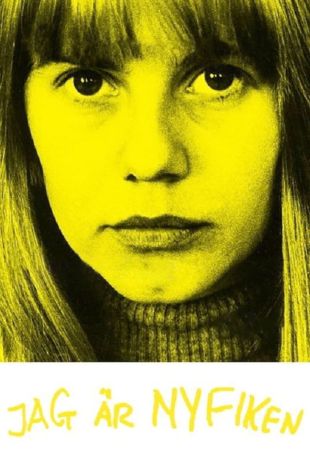
Sometimes a motion picture makes national headlines for all the wrong reasons, gaining a reputation that is entirely the opposite of what the writer-director intended. Historically speaking, there has perhaps never been a more extreme case of this than I Am Curious (Yellow). Branded as "obscene" back in 1968, and finally upheld by a Supreme Court Decision that allowed it to be released stateside the following year, Yellow became a snide pop-culture joke for decades, its title synonymous with "arthouse pornography" thanks to a few sex scenes that were relatively explicit for the time. But the public assessment of this film in the U.S. couldn't have been any more off-target. If pornography is that which demeans and objectifies, Vilgot Sjoman's film can easily (and non-pejoratively) be called 'anti-pornographic.' It is, in fact, a droll and extremely sophisticated comedy about the emotional, political, social and sexual liberation of a young woman, Swedish actress Lena Nyman. Sjoman's m.o. involves breaking down the barriers that separate fiction and documentary, so that we never quite know if we're seeing Nyman the actress or Nyman the fictional subject. Moreover, he also conceived the Nyman character as an extension of the real-life performer and what she was experiencing off-camera during the production. As a result, Sjoman somehow manages to create one of the most multidimensional and fully-realized portraits of a female subject in film history. The picture never glorifies Nyman or places her on a pedestal, but instead paints her realistically, as an idealistic and loveable but somewhat naive young woman. Caught up in a voyage of self-discovery and exploration of the world around her, she's bound to her socialist ideals but repeatedly let down by the backwardness of her fellow countrymen. That accounts for the most prominent source of the film's comedy and explains the enormous controversy that it generated in Sweden: throughout, Sjoman keeps wryly skewering the conservatism of the Swedes, calling our attention to how reactionary they are against a backdrop of late '60s progressivism - as when Nyman approaches a couple of Swedish guards and asks them about nonviolence, but gets only incomprehension. Interview sequences such as this - which make up the first third of the film - concurrently take on a bristling satirical quality and function as an invaluable portrait of the Swedish sociopolitical landscape circa 1966. Equally impressive throughout the film is the breadth of Sjoman's structural experimentation; in addition to the said style that bridges narrative modes of filmmaking, the director includes a mock contest within the movie ("Guess What's in the Bag!"); cameos by Olaf Palme, Martin Luther King, Jr., and Yevgeny Yetushenko; and a couple of wild dream and fantasy sequences - one of which sardonically puts Dr. King in a very ghastly and shocking light as a product of Nyman's fevered sexual neuroses. The moody, high-contrast black and white cinematography enlisted throughout is also a major plus. Not quite everything in the movie delivers - the cyclical ending is a disappointment, and a fantasy sequence in the Swedish royal residence feels klutzy and awkward. Otherwise, this is a bold and brilliant work - a real original that has suffered from public incomprehension since its release and is still crying out for reassessment and rediscovery. The companion feature I Am Curious - Blue, however, is totally unsatisfying; it isn't a sequel, but a rehash of the same type of material, done in a much less interesting and compelling manner.
